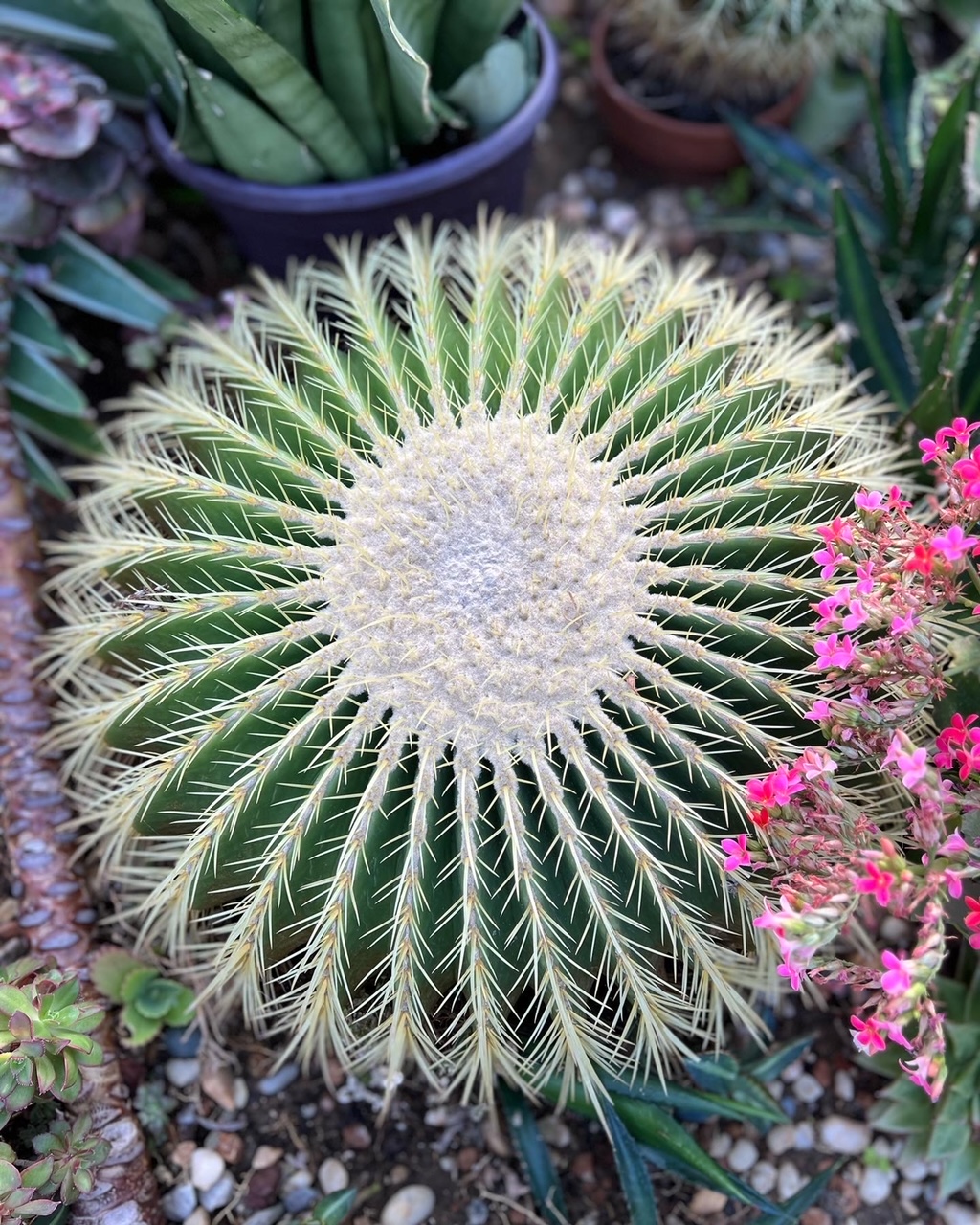[ad_1]
Cherry Ong is taking us again to the conservatory at Centennial Park within the Toronto space. Right now we’re on a go to to the arid home, which is filled with crops from around the globe which are tailored to dry and desert environments.
 Arid doesn’t imply boring or empty. This conservatory is filled with an enormous vary of types and plant shapes that fill each inch with one thing value .
Arid doesn’t imply boring or empty. This conservatory is filled with an enormous vary of types and plant shapes that fill each inch with one thing value .
 Ponytail palm (Beaucarnea recurvata, Zones 10–12) is usually offered as a houseplant, however given ample house it is going to develop into a giant dramatic plant like this. The swollen trunk serves to retailer water for dry seasons.
Ponytail palm (Beaucarnea recurvata, Zones 10–12) is usually offered as a houseplant, however given ample house it is going to develop into a giant dramatic plant like this. The swollen trunk serves to retailer water for dry seasons.
 You’ll be able to’t have an arid home with out cacti. This household of crops is native to the Americas. The swollen stems retailer water, and the spines hold hungry—and thirsty—animals from munching on them. These sensible variations additionally flip them into residing sculptures.
You’ll be able to’t have an arid home with out cacti. This household of crops is native to the Americas. The swollen stems retailer water, and the spines hold hungry—and thirsty—animals from munching on them. These sensible variations additionally flip them into residing sculptures.
 Mom-of-thousands (Kalanchoe, Zones 10–12 or as a houseplant) has engaging succulent leaves, however these nodding, bell-shaped flowers are lovely, each when contemporary and salmon-orange, and as they age and fade to pink.
Mom-of-thousands (Kalanchoe, Zones 10–12 or as a houseplant) has engaging succulent leaves, however these nodding, bell-shaped flowers are lovely, each when contemporary and salmon-orange, and as they age and fade to pink.
 Agaves (Agave species, hardiness varies by selection) are one other American succulent that’s well-liked in arid shows for his or her enormous leaves, which are sometimes coloured blue and even variegated.
Agaves (Agave species, hardiness varies by selection) are one other American succulent that’s well-liked in arid shows for his or her enormous leaves, which are sometimes coloured blue and even variegated.
 The long-lasting golden barrel cactus (Echinocactus grusonii, Zones 9–12) is vastly well-liked in dry, heat landscapes however is endangered within the wild as a consequence of habitat destruction for agriculture and grazing.
The long-lasting golden barrel cactus (Echinocactus grusonii, Zones 9–12) is vastly well-liked in dry, heat landscapes however is endangered within the wild as a consequence of habitat destruction for agriculture and grazing.
 Aloe is an African genus of succulents with many various species, starting from small rosettes to tall ones like this with their lovely succulent foliage.
Aloe is an African genus of succulents with many various species, starting from small rosettes to tall ones like this with their lovely succulent foliage.
 It is a lovely cactus, which I believe is a species of Mammillaria.
It is a lovely cactus, which I believe is a species of Mammillaria.
 A tower of small succulents makes a dramatic assertion within the arid home.
A tower of small succulents makes a dramatic assertion within the arid home.
Have a backyard you’d wish to share?
Have pictures to share? We’d like to see your backyard, a specific assortment of crops you’re keen on, or an exquisite backyard you had the prospect to go to!
To submit, ship 5-10 pictures to [email protected] together with some details about the crops within the photos and the place you took the pictures. We’d love to listen to the place you might be situated, how lengthy you’ve been gardening, successes you might be happy with, failures you realized from, hopes for the longer term, favourite crops, or humorous tales out of your backyard.
Have a cell phone? Tag your pictures on Fb, Instagram or Twitter with #FineGardening!
Do you obtain the GPOD by e-mail but? Join right here.
[ad_2]
Source link

